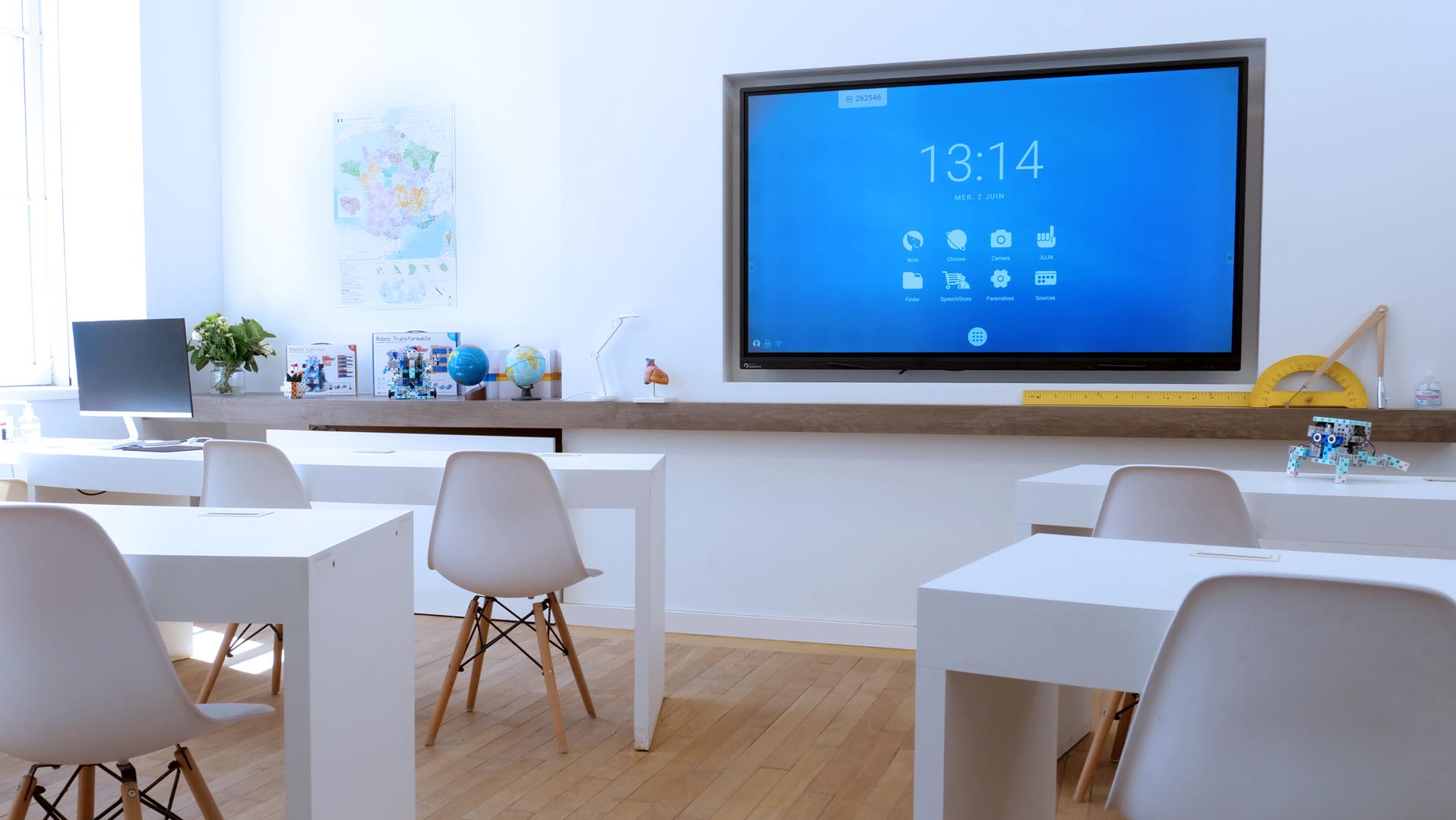Interactive displays have proven to be a game-changer for educational institutions, and with good reason – they transform classrooms into lively creative hubs, where students learn more effectively than ever. However, with so many options on the market, choosing the best interactive display for your education can be a challenging task. Read on to find out about what you should consider when picking the best interactive display for your school, college, or university.
Interactive displays: What are your classroom’s dimensions?

The first important factor to consider is the size of the room in which you intend to set up your interactive display. Are you setting it up in a small space for nursery and reception students, a primary school classroom, a secondary school classroom, or a university lecture hall? Each of these spaces are a different size, and will require a different sized interactive display as a result.
For example, if you are equipping a smaller space, we would recommend opting for a smaller screen size, like our 55” models. For standard-sized primary school classrooms, which are around 6 metres in depth, a 65” interactive screen would be perfect. For larger primary school classrooms and secondary-school classrooms, it is worth considering a 75” screen option. For much larger spaces – like college rooms, university lecture halls and auditoriums, for example – then we would strongly advise picking an 86” or 98” display.
By following these recommendations, you can ensure that everyone in the room is able to see and hear your presentation clearly.
interactive displays for education : How old is your audience?

The age of your students is also an important factor to consider, as it will give a general indicator of their height. As an example, it would not be convenient to use a 65” or 75” display for a class of Year 1 students, as they will almost certainly be unable to reach parts of the screen – the view will also be too large for them.
For very young pupils, a 55” screen with a height-adjustable screen support would be the best option. For older primary school students, height is not as much of an issue, but it is still worth using a height-adjustable support to remain adaptable as students grow.
From secondary school onwards, student height often stops being an issue – but it is still a good idea to think about what sort of screen support would suit the space. Would you and your class benefit most from a free-standing screen, one with wheels on its base for mobility, or a static wall mount?
What educational resources would you want to use?

To make sure you are getting the very most out of your interactive display screen, it is worth thinking about what sorts of teaching resources would be useful for you as an educator. With the range of free and paid applications and resources available, you will be sure to find something that matches your use-case – but it can be a challenge knowing where to look for them.
For example, are you looking for a quick, easy way to build colourful, visually impactful presentations? The Iolaos software suite offers a fantastic set of tools for this purpose, as well as teaching resources for primary-school lessons. Want to find informative, ready-made slides and videos for your classes?
Khan Academy is a free resource that offers these kinds of resources, along with test preparation exercises – and best of all, their material can be filtered by age group and subject.
Lastly, Twinkl provides instant access to online educational resources for all age groups, from ages 3 to 18.
